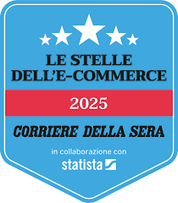Operational leasing What is it and what are the tax advantages in renting IT equipment
Present on the Italian market for a few years, the operational leasing formula has quickly achieved some success. Alternative to leasing, it is more convenient than leasing in certain product categories, including IT equipment.
What is the operating lease?

Also known as operational rental, this "purchase" formula is the third option that industrial buyers can draw on after the classic purchase and the equally famous leasing option. The operational lease allows a business entity, usually a company, but also an entrepreneurial activity, to have the availability of an asset for a predetermined duration. This service is rewarded by the buyer to the seller (or by the specialized company that acts as an intermediary) in exchange for a predetermined monthly fee. The operating lease contract does not only include the product, but can also include the scheduled assistance service, the emergency service and the supply of any consumables.
At a bureaucratic level we find two or three protagonists in the transaction. Upstream we find the seller, who, having completed the transaction with the intermediate party, exits the agreement. At the center we find the lessor, who purchases the product to rent it (lease) to the person who will actually use it and who from a bureaucratic point of view will become the lessee.
Unlike other formulas, the operating lease does not usually provide for the mandatory purchase at the end of the contract or the ownership of the object by the lessee at the end of the same.
For which articles and categories is this formula used?
The presence of an intermediate subject who acts as guarantor and lessor towards the final subject characterizes the type of products involved in this formula quite well. In fact, those who choose to opt for operational rental are not usually interested in acquiring the item "for life", but aim to have it immediately, in excellent conditions and with an assistance service. Above all, aim to have it for a certain period, without having to worry about the technological decline of the instrument.

The characteristics of the operational rental outline the categories covered by this formula in a very precise manner. In particular we find:
Operating lease, the terms
The operating rental agreement provides for a lease of the instrument or equipment for a certain number of years. At the end of the contract period, the tenant will be faced with three options, which are often defined or at least listed at the beginning of the contract. In fact, the person who uses the good can:
Convenience of the operational lease
Focusing on the IT sector, a matter within our competence, but with the certainty that what has been reported also applies to the other categories, we have identified the advantages of operational rental, seen from both sides. “lessee” and “lessor”.
Advantages for those who purchase:

Advantages for those who sell:
Financial leasing or operational leasing?
Let's discover the differences between the two different systems that act as an alternative to immediate purchase:
Tax deductibility
As already indicated previously in the advantages listed above, the tax deductibility of operating lease payments is not linked to time limits, neither for the minimum nor for the maximum. A further advantage is the complete deductibility of the fee for IRAP and IRES purposes (because it is considered as a fee for the use of third-party assets).
Advance/Redemption
No need for a hefty down payment or redemption fee. The obligation to purchase the asset at the natural expiry of the contract is in fact not the responsibility of the company that uses the asset. The supplier company or a third party delegated by it is delegated to this party.
Service and maintenance fee
When necessary, the value of the services (scheduled maintenance, etc.) can also be included in the operational rental value. Unlike leasing in which this part is always excluded and remains the responsibility of the end user.
Contract extension
The operating leasing contract can be extended without any type of problem, allowing the end customer efficient management of the equipment from a technological point of view.

The steps that lead to the signing of the operating lease contract
The company supplying the goods decides to add this "sales" option to traditional sales and leasing.
He then proceeds to establish a contract with the company that will finance the operation. The object of the contract is the goods that can be included in this rental and the formula thereof.
The financing company purchases the good based on the specifications requested by the user, who is routed to this company by the manufacturer himself.
The customer receives the good and uses it by paying a fixed fee which includes insurance on the same. If scheduled maintenance services are included, the customer agrees with the supplier company regarding their provision.
At the end of the duration of the contract, it is terminated through final invoicing to the customer or to a third-party company. The customer also has the right to decide to extend the contract for a specific period, possibly also reviewing the cost of the fee.
Operational leasing is therefore perfect for technological assets. In fact, it allows you to avoid a high purchase cost, while at the same time ensuring that you always have an up-to-date product, without the risk of final losses when the good is no longer up-to-date or competitive compared to what is offered by the market.
Find out more about our rental service, ask for more information without obligation








